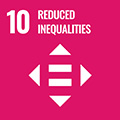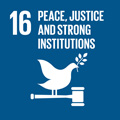- Docente: Margherita Sani
- Credits: 6
- SSD: L-ART/04
- Language: English
- Teaching Mode: In-person learning (entirely or partially)
- Campus: Bologna
- Corso: Second cycle degree programme (LM) in Visual Arts (cod. 9071)
Learning outcomes
Students acquire a fundamental knowledge of the different key players in the museum field at European level; that is, institutions, private organisations, networks, etc. In particular, they develop methodological tools and interpretative skills useful to recognise, analyse and comment on museum policies in some European countries, thanks to the presentation of some case studies of “good practice”.
Course contents
Learning outcomes 2022-2023
Students will gain an understanding of the current trends and of the most relevant issues which characterize the museum sector in Europe and of how these translate into actual museum practices.
Through reading and browsing, they will be able to find their way among the different documents which reflect European policies in the cultural sector, familiarize with the EU jargon and with the calls for proposals which finance projects in the museum field. They will also acquire an understanding of how projects should be designed, in order to receive EU funding.
In doing that, they will develop a forward planning-oriented mindset and become familiar with the basics of project management.
Course contents
The course (Lab) consists in two parts: the first part will look at the museum landscape in Europe and its functioning, at current museological trends and at the practices carried out by museums. Starting from this overview, it will identify themes suitable to design projects to be submitted to the EU for funding.
The second part will focus on European cultural policies and programmes, to provide students with the essential tools to understand the ongoing debate and the rules of EU funding.
The core of the Lab, indeed, will focus on how to design a project which could be possibly financed by European programmes. This will mean familiarizing with the EU structure, with policies and priorities, calls for proposals and application forms.
The writing of a project application will be simulated in groups, taking into account all the necessary steps: from developing the project idea to identifying the partners, from establishing aims and objectives to defining activities and outputs, timeframes and performance indicators.
The topic of emerging professional profiles and key competences needed for the museum profession will also addressed and will be complemented by encounters with protagonists working in or for museums nationally and internationally.
Readings/Bibliography
For students attending classes/the Lab:
P. van Mensch, L. Meijer-van Mensch, New Trends in Museology II, Muzej novejše zgodovine Celje, 2015 (available in pdf)
M. Sani, Cross-border cooperation for museums. From a project idea to a successful proposal. A toolkit, NEMO, 2021 https://www.ne-mo.org/news/article/nemo/eu-funding-and-cooperation-explained-in-new-nemo-toolkit.html
Further reading materials will be provided by the teacher during classes.
For students not attending classes/the Lab:
P. van Mensch, L. Meijer-van Mensch, New Trends in Museology II, Muzej novejše zgodovine Celje, 2015 (available in pdf)
M. Michaelson, P. Samis, Creating the visitor-centred museum, Routledge, 2017 N.B. This book is not available in digital form
AA.VV., Audience research as an essential part of building a permanent exhibition, 2013
http://online.ibc.regione.emilia-romagna.it/I/libri/pdf/LEM6th-report-audience-research-as-an-essential-part-of-building-a-new-permanent-exhibition.pdf
Gibbs, Sani, Thompson (eds.), Lifelong learning in museums. A European handbook, 2007 (Chapter 2 Learning in museums; Chapter 3 Visitor research) http://online.ibc.regione.emilia-romagna.it/I/libri/pdf/LifelongLearninginMuseums.pdf
Teaching methods
The course relies on an interactive, dialogical and collaborative methodology. Lectures, discussions and students’ presentations will be equally distributed during class hours. Students attending classes will be assigned topics to explore individually and report upon in class.
The course will also require students to apply and transfer the acquired knowledge to develop ideas and content for a project work which will be undertaken in groups.
Restricted places for incoming exchange students:
Places for incoming exchange students in this teaching activity are limited and are primarily reserved to students enrolled in art related programmes at their home university. To check availability, please write to amac@unibo.it.
Assessment methods
There will be a final oral exam for this course.
Students attending classes will present and discuss the topics explored individually and the project work undertaken in groups during the course.
Students not attending classes will be asked to answer questions related to the readings indicated in the bibliography.
Successful candidates shall demonstrate an adequate knowledge of the contents presented in the readings and a critical ability to examine and discuss the key issues contained therein.
1. It will be graded as excellent the performance of those students demonstrating to be able to clearly present the topics addressed by the course. The proper use of the specific language during the examination will be also essential.
2. It will be graded as discrete the performance of those students with mostly mnemonic knowledge, no in-depth analysis capabilities and a correct, but not always appropriate, language.
3. It will be graded as barely sufficient the performance of those students with approximate knowledge, superficial understanding, poor analytical capabilities and a not always appropriate language.
4. It will be graded as insufficient the performance of those students with learning gaps, inappropriate language, no orientation within the recommended bibliography.
Teaching tools
Lectures, Powerpoint slides, online resources (webinars, videos)
Office hours
See the website of Margherita Sani
SDGs




This teaching activity contributes to the achievement of the Sustainable Development Goals of the UN 2030 Agenda.
